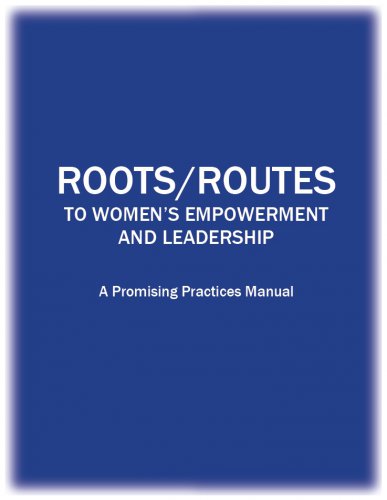This manual is not intended to be a complete program, but rather provides a framework for a program which meets at minimum 3 times a week, 4 hours per day for at least 10 weeks, or around 120 hours of class time. These modules should take between a third and a quarter of the total time of a program. The remainder of the program material should be developed taking into account your community’s and organization’s mission and priorities.
This program usually requires considerable resources. A 10-week program for 12-14 women typically requires a budget of $20,000-30,000: this is to provide meeting space, childcare for those who need it, meals and snacks, transportation assistance, honoraria for participants, and payments for guest facilitators. The participating programs in this project observed that participant honoraria as low as $20/day, plus food and transportation assistance, increased participant attendance, motivation, and pride in the program and their achievement; sending the message that the organization values their time provides an additional boost to participant self-esteem beyond the content of the program.
Download the Manual here
However, these modules might also be used by a self-directed learning group with a minimal budget. While the outcomes of this model have not been tested for this purpose, the material could be used for a variety of innovative training options.
Who is this manual for?
This manual is intended for use by experienced organizations and facilitators working from a peer learning and/or social justice model. Organizations should be woman-centred and led.
Assessing participant readiness
As this material and learning itself is challenging – and these programs require considerable resources to run – it is important to assess participant readiness before including women in the program. The participating programs of the Roots/Routes Project found that, while what counts as “readiness” will vary between communities and regions, in general women need basic literacy skills in English, the ability to communicate in English, a stable living situation, the capacity to sit in a classroom for 5 hours a day, the capacity to “get along” well enough with others to avoid significant classroom disruption, and to have sufficient wellness. Based on experience, we recommend that participants with active or chaotic addictions, mental health conditions that interfere with daily living, unstable living circumstances, or major difficulties with the classroom setting and/or group dynamics should be encouraged to re-apply when their living situations have become more stable.
It can be difficult to balance the principle of inclusion – and to resist pressure to accept forced referrals from caseworkers and partner organizations – but screening as described above not only directs resources to those who are most able to make use of them, reducing attrition, but increases participant pride in the program, as they have achieved something merely by being selected. Admitting participants who are not able to benefit or take part may reduce the impact of the program and the pride participants experience. It may also significantly disrupt the learning of the other participants. Setting clear criteria for admission helps create the best possible learning environment for your participants.
There are many possible screening tools which you can use to assess participants – an application form, a letter of interest, an interview with the facilitator. See Appendix A for examples of screening tools. It is a good idea to maintain a list of alternate programs and services you can recommend for participants who you feel are not yet ready, such as literacy programs, housing services, and addiction and mental health services. Applicants can then be encouraged to re-apply for your program once they’ve dealt with the issue at hand.
Table of Contents
About Roots/ Routes to Women’s
Empowerment and Leadership
DefiningWomen’s Empowerment & Leadership
About Marginalized Women
Note to the Coordinator or Trainer for the Program
The Goals of this Program
How to Use this Manual
MODULES
Anti-Oppression and Understanding Systems of Power
Goal Setting and Asset Mapping
Story Telling for Change
Community Engagement for Social Change
Further Training and Mentoring
APPENDICES
Appendix A
Appendix B
Appendix C
Appendix D
Appendix E
Appendix F
Appendix G
Appendix H
Format





